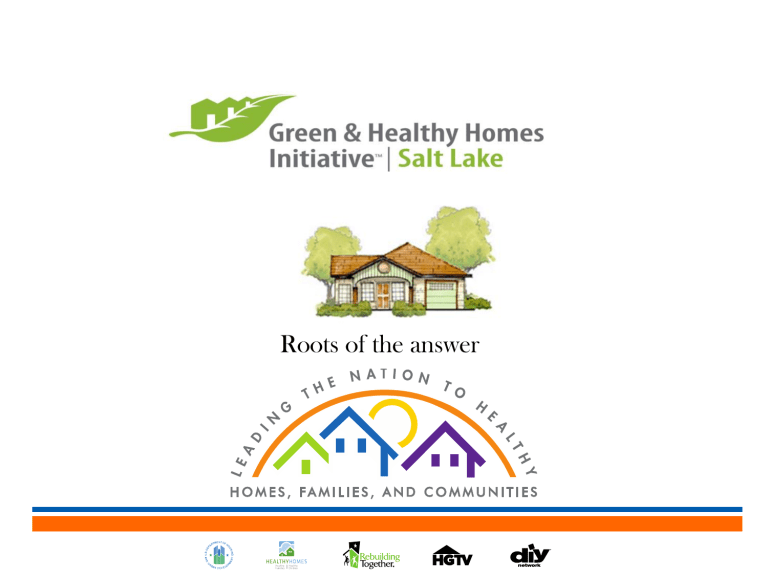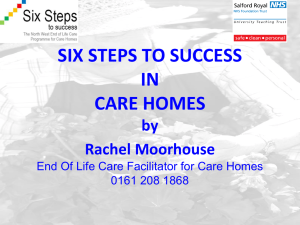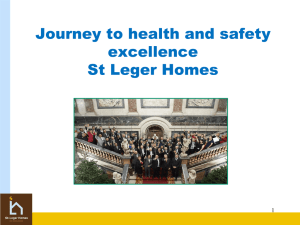Presentation 1 - National Healthy Homes Conference

Roots of the answer
"If you foolishly ignore beauty, you'll soon find yourself without it. Your life will be impoverished. But if you wisely invest in beauty, it will remain with you all the days of your life.“ Frank Lloyd Wright
Root of the problem-to have effective outcomes we need to identify the roots of the problems
Roots of the answer-but to have effective outcomes we also need to identify the roots of answer for families like the Fultons
The roots of the answer include
:
1.
New construction of single family homes that fit into existing neighborhoods
2.
Rehabilitation of existing abandoned homes
3.
Green & Healthy Homes Initiative
In the first part of the 1900’s a lot of effort went into the design and development of affordable single family homes.
To come up with a strategy to improve our neighborhoods we looked to the past.
•
From 1900 through the first part of 1940 the bungalow/cottage design dominated the development and construction of single affordable housing in Salt Lake City, Magna, Murray, Midvale and South Salt Lake city. The homes built during this time period reflected influences from the Prairie Style, Bungalow, and Arts and Crafts houses.
•
Arts and Crafts houses (2005-2015) are generally large, two-story buildings that emphasize such elements of their wood frame construction as rafters, purlins, and ridge beams. Some examples of the style also had half-timbering reminiscent of English Tudor architecture. Porches and verandas aided in creating an impression of informal living and seemed to unite the house with the landscape.
•
In the interiors, natural materials such as stained or oiled wood achieved a cozy, informal quality. Interiors featured inglenooks, tiled fireplaces, built-in bench seats, wood paneling and wainscoting, and metal fixtures whose surfaces often had the appearance of a hand-beaten finish. The innovative Arts and Crafts design philosophy also had an influence upon the Prairie School style.
The Prairie School style: The early work of Frank Lloyd Wright and his Midwest associates gave rise to the Prairie Style, popular during the first two decades of the 20th century. In addition to creating clean, precise, angular forms, the Prairie School emphasized horizontality.
This sparseness of appearance was accomplished by the use of masonry or stucco over masonry or wood frame construction, highlighted by wood or cast stone banding. The building often accentuated the texture of its materials and featured abstract patterns in stained and leaded glass.
The Prairie School style was particularly popular in Utah, probably because some of Utah’s architects worked in Chicago during the inception of the style. One such architect, Taylor
Woolley, apprenticed with Frank Lloyd Wright in the mentor’s Oak Park studio during the first decade of the century. The appearance of the style in Utah also coincided with a period of rapid urban growth along the Wasatch Front. Between 1910 and 1920, a number of architects in Salt Lake City and Ogden specialized in the style.
Bungalow: The bungalow expressed comfort and a sense of shelter, qualities emphasized by the texture of exposed beams, rafters, shingles, bricks, cobblestones, and other structural features. Bungalow plans were advertised as open, informal, and economical. The front door of the bungalow often opened directly into the dining room.
The most popular house type in Utah during the first quarter of the 20th century, bungalows are common throughout the state. The bungalow became the basic middle-class house, replacing the Victorian cottage of the later 19th century. Numerous pattern books, many published in California, helped make it popular, as did a period of economic prosperity that allowed families to purchase their first homes
First root of the answer: Webster School Cottages
Our quest for excellence in affordable healthy housing began in 2007. Salt Lake
County contracted with Community Development Corporation of Utah (CDC),
Assist, Inc. and others to develop a five lot subdivision that became known as the
Webster School Cottage program. The name of the Webster School Cottages came from the beloved Webster Elementary School which had been demolished after suffering damage in a fire.
On the innovation side of the equation, the homes were given state-of-the art energy saving enhancements, as well as water conservation features . Three of the homes have geo thermal systems. One has a passive solar system. All have no step entries, one is fully and wheel chair accessible.
Second Root of the answer: Idea Houses
•
THE IDEA HOUSE
•
In 2008 Salt Lake County working with its key partners, Community Development
Corporation of Utah, Assist Inc., Questar, Rocky Mountain Power, CAP Weatherization developed the Idea House concept. Instead of building from the ground up like they had done with the Webster Cottages, the concept was to rehabilitate abandoned and foreclosed homes. The primary objective was to revitalize homes while preserving the original aesthetic of the neighborhood. Again the homes incorporated the tested design concepts of
Frank Lloyd Wright and the latest innovations of modern technology for energy efficiency, including solar panels on two of the homes.
•
Salt Lake County Sheriff stated: This program that ties into Neighborhood watch has become the most effective tool they have in fighting crime and stabilizing neighborhoods.
Reported crime dropped from 113 calls to 30 calls in a year.
•
Each open house for Webster School Cottages and Idea Houses include a meeting for the neighborhood watch
The third root of the answer: Green &
Healthy Homes Initiative
On November 28, 2012, the Green & Healthy
Homes Initiative Salt Lake Compact was signed, the partners included the medical community and housing providers
Before GHHI, one agency at a time helps family
Roots of the answer:
Medical treatment
Case management-key behaviors
Remediation of the home-
Healthy Home = Healthy Household
Remediate Home
Case Management
Medical treatment
Proof of concept
15 targeted projects approach
15 households referred by Medical Community
1. Intensive Case Management
2. Complete Medical Care
3. Remediation of home
Track the before and after cost of medical care, days of school missed, and days of work missed.
• Three roots of the answer
– The past to guide how best to revitalize neighborhoods
– Idea Houses, the past and present best ideas on rebuilding homes and neighborhoods
– GHHI-comprehensive assessment of household needs, assessment of home and partners coming together to complete home and neighborhood







